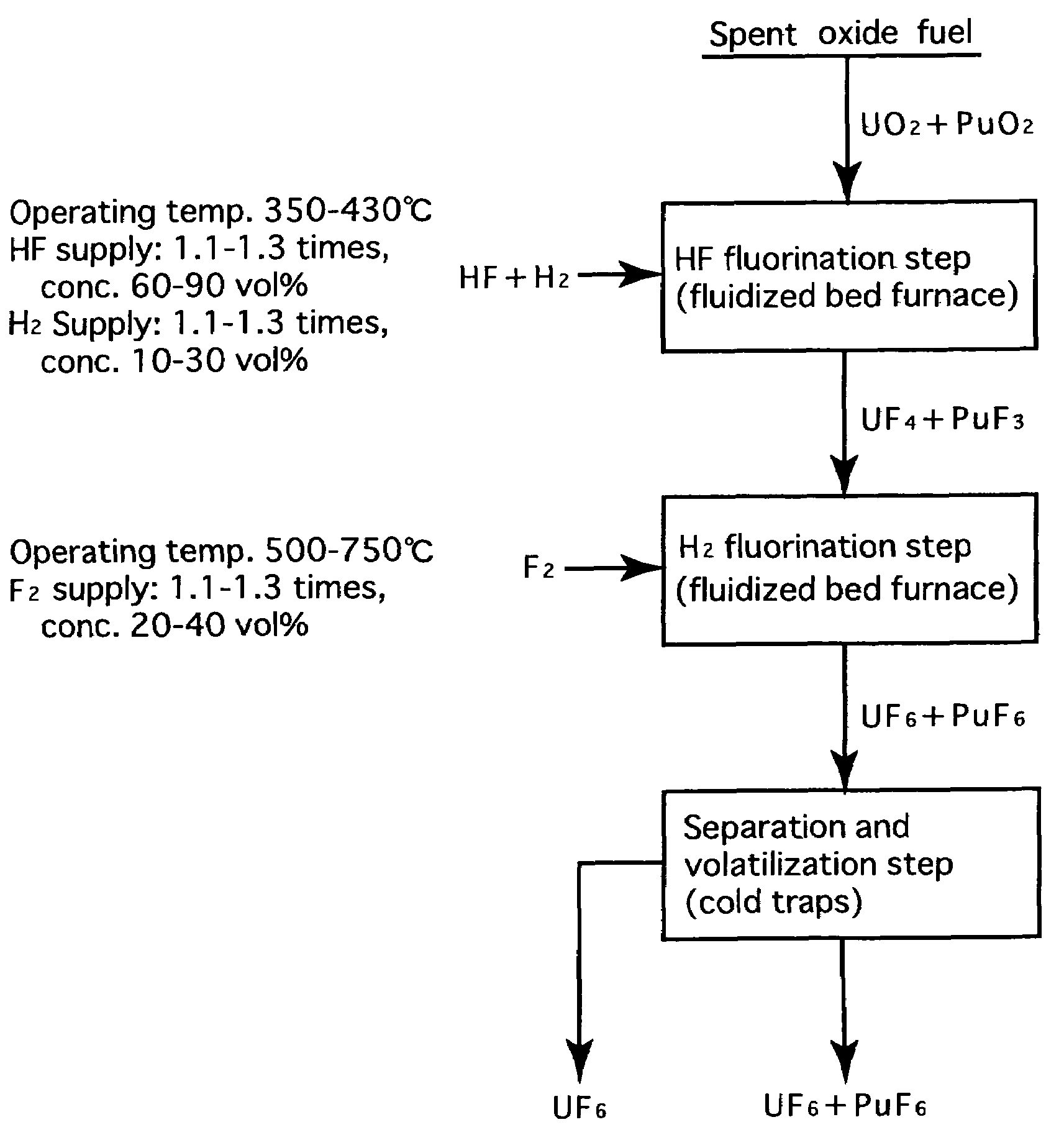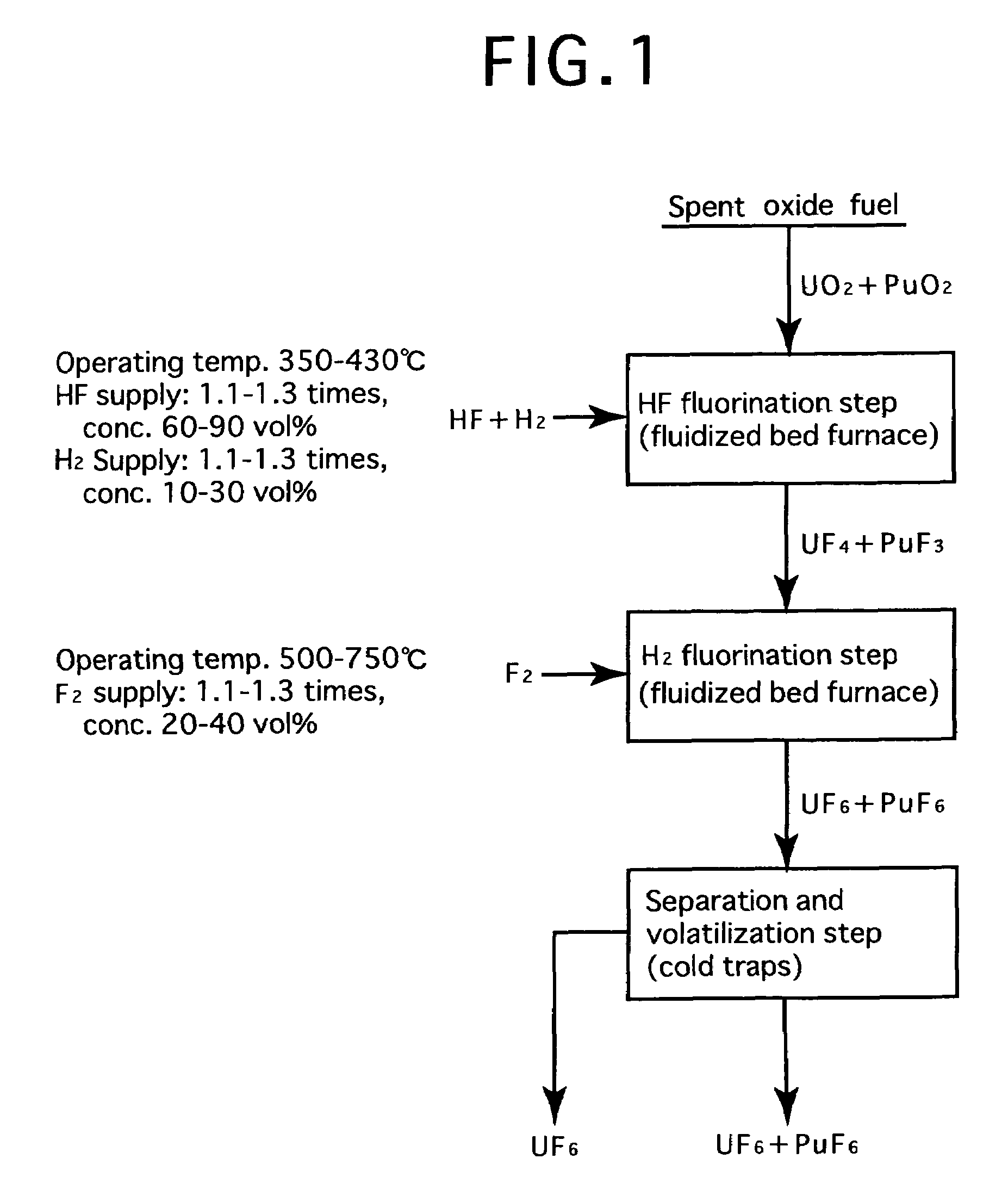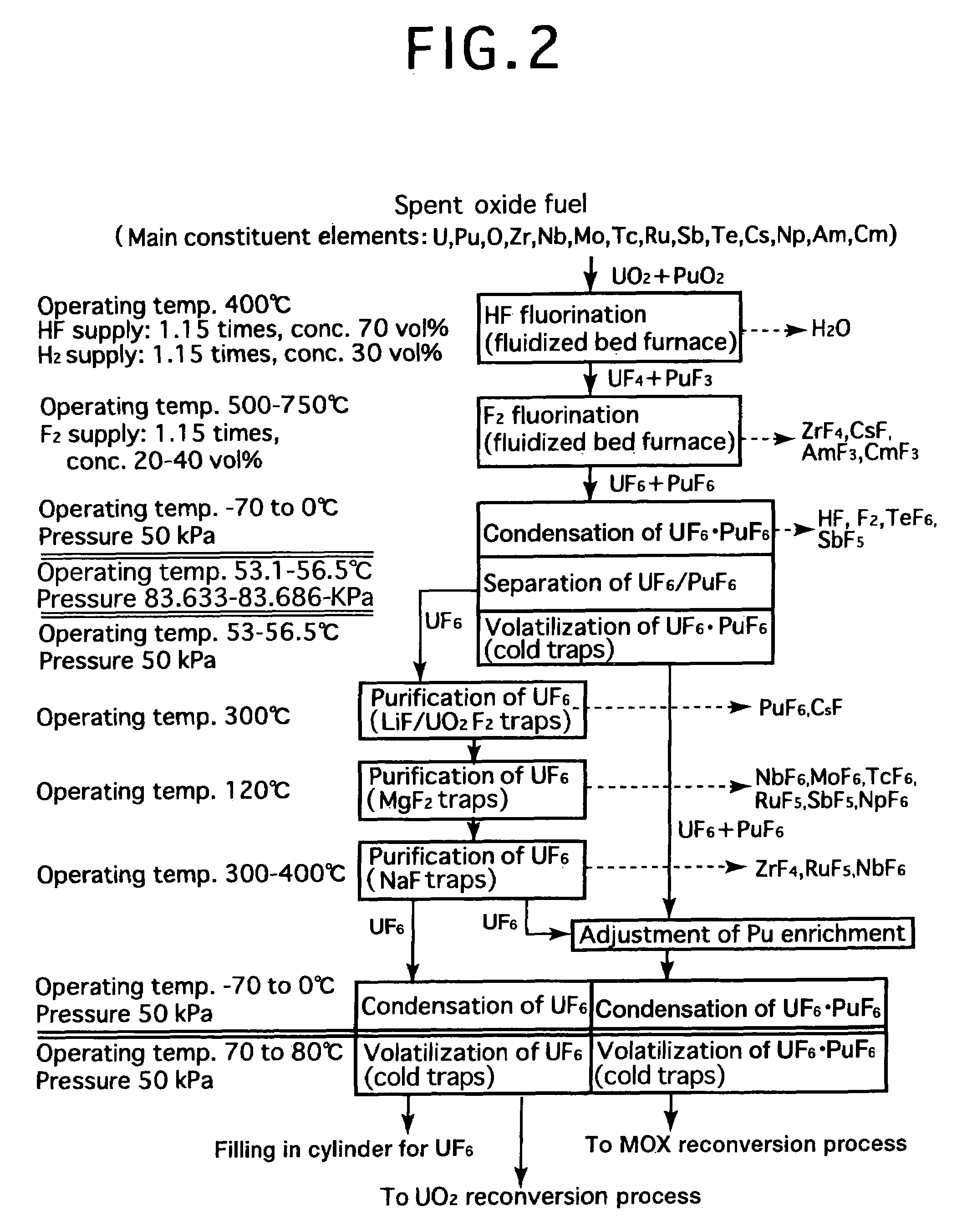Reprocessing method by fluoride volatility process using fractional distillation
a technology of fluoride volatility and fractional distillation, which is applied in the field of reprocessing method by fluoride volatility process using fractional distillation, can solve the problems of high fluorination and plutonium purification, difficult to be corroded or deteriorated, and no practical phase of these techniques, so as to improve the ratio and rate of conversion into puf6 , the effect of reducing the consumption of expensive fluorin
- Summary
- Abstract
- Description
- Claims
- Application Information
AI Technical Summary
Benefits of technology
Problems solved by technology
Method used
Image
Examples
examples
[0025]FIG. 2 is a process flow showing one example of the reprocessing method by the fluoride volatility process using fractional distillation according to the present invention. This is an example of a process of reprocessing a spent oxide fuel. The spent oxide fuel as a raw material has been subjected to decladding processing, and its main constituent elements include U, Pu, O, Zr, Nb, Mo, Tc, Ru, Sb, Te, Cs, Np, Am and Cm, and uranium exists in a form of UO2 and plutonium exits in a form of PuO2. These raw materials are fluorinated in two stages.
[0026]In the first-stage HF fluorination, a raw material (spent oxide fuel) is subjected to a reaction with an HF gas (supply: 1.15 times the stoichiometric ratio, concentration: 70 vol %) using a fluidized bed furnace (operating temperature: 400° C.). At this time, an H2 gas is also supplied, and the supply thereof is greater than 0.5 times the stoichiometric ratio to PuO2, and the concentration may be any of 5 to 100 vol %, but should b...
PUM
| Property | Measurement | Unit |
|---|---|---|
| temperature | aaaaa | aaaaa |
| temperature | aaaaa | aaaaa |
| temperature | aaaaa | aaaaa |
Abstract
Description
Claims
Application Information
 Login to View More
Login to View More - R&D
- Intellectual Property
- Life Sciences
- Materials
- Tech Scout
- Unparalleled Data Quality
- Higher Quality Content
- 60% Fewer Hallucinations
Browse by: Latest US Patents, China's latest patents, Technical Efficacy Thesaurus, Application Domain, Technology Topic, Popular Technical Reports.
© 2025 PatSnap. All rights reserved.Legal|Privacy policy|Modern Slavery Act Transparency Statement|Sitemap|About US| Contact US: help@patsnap.com



